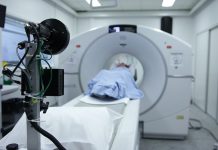
Intermittent fasting has become fashionable on the web after several celebrities, have announced that they are fans of it and share the results with their followers.
However, before including it in your diet, it is important that you knew details about it and, of course, look for a doctor you trust who can advise you on the best way to include it in your routine.
What is it?
Intermittent fasting is the cycle between periods when you eat and periods when you fast. Currently, it is a very popular way to lose weight and improve health.
Although the habit has been favored by several celebrities, it is not a novelty and is an ancient health secret, since it has been practiced throughout human history by different cultures.
Health professionals explain that the habit allows the body to use the stored energy and thus burns excess body fat.

When we eat, we eat more energy than we can use immediately and some of that energy is saved for later use. With fasting, the body is encouraged to use it, burning fat.
It is worth mentioning that the text is informative and does not replace consultation with a nutritionist and other specialists. The search for specialized doctors before starting any type of treatment is essential.
Intermittent fasting – 10 Facts
- Insulin is the main hormone involved in the energy storage of food.
- This increases when we eat, helping us to store surplus energy in two different ways.
- Meanwhile, carbohydrates are divided into units of glucose (sugar), which can be joined into long chains, called glycogen, which are then stored in the liver or muscles.
- However, storage space is limited, and when it is full, the liver begins to convert excess glucose into fat.
- This process is called lipogenesis again, which literally means creating fat again.
- Some of the newly created fat is stored in the liver, but most is transferred to other fat stores in the body.
- Although this is a more complex process, the amount of fat that can be created is unlimited.
- Thus, there are two complementary energy storage systems in the body’s diet.
- One is very easy to access, but has limited storage capacity (glycogen), and the other is the most difficult to access, but has unlimited storage capacity (body fat).
- Doctors argue that if you start eating as soon as you get up and don’t stop until you go to sleep, you will spend most of your time absorbed. Over time, we will gain weight, as there is no time left for the body to burn stored energy.












